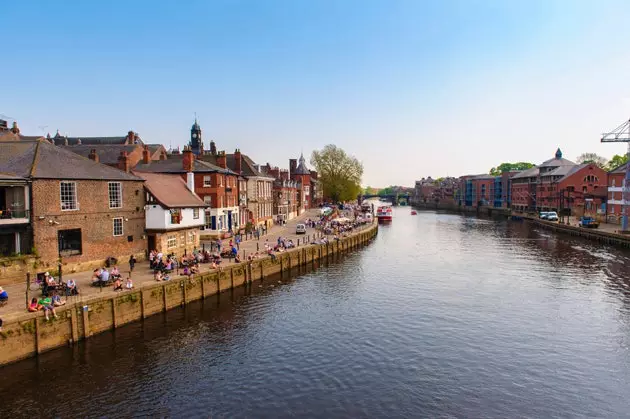
Guy Hawkes and Kit Kat were born here
To break myths, York deserves a bit of history . More than anything that King George VI of England himself proclaimed something as lapidary as that "The history of York is the history of England" . Respect. The monarch was right because the city still has very present traces of the cultures that dominated it in its day. These civilizations were not only passing through York. They also left their mark with facts, wars and anecdotes that, possibly, we were asked in ESO history exams.
To begin with, one of Romans. In his quest to rule Europe, they reached the north of England but could never make Scotland their own . Back in 71 BC, the Romans made York a fortress, taking advantage of this favorable location due to the confluence of the Rivers Ouse and Foss . Roman settlement did not culminate in the conquest of Britain as their troops never reached beyond the Antonine Wall (AD 142) - in what would be just north of Glasgow today.
Still, York was not just any city for the Romans. It was the capital of Lower Britannia by express decision of Emperor Septimius Severus (146 AD – 211 AD). In addition, the city saw the emperor crowned Constantine the Great (250 AD – 306) . Precisely, both rulers died in York, or rather Erboracum, by name during the Roman rule. Around the year 400 AD, with the empire already in decline, the city was flooded on several occasions by rising rivers and the Romans chose to withdraw. Indeed, the city is prone to flooding. This year was something serious.
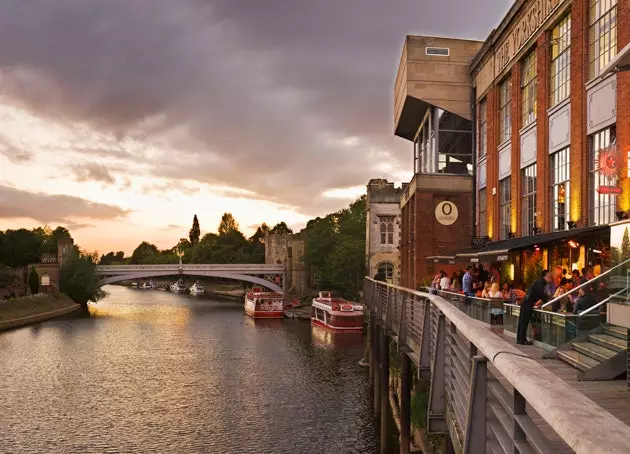
These peaceful canals often flood the city
In addition, next to York Cathedral, there is a sculpture of the aforementioned Constantine the Great . The emperor is seated with a broken sword in the shape of a cross. It is a clear allegation to Christianity since Constantine was the first Roman emperor to authorize the worship of Christianity. Today, it is a pole of attraction for selfie sticks. For those interested, There are up to 11 points of attraction that are collected in this Roman route through the city of York.
After the Romans, the Vikings also made their first steps in the city well into the 9th century. To begin with, they named it Jorvik which is much more similar to the current name of York. They mostly settled in what is now the Coppergate shopping centre. It so happens that during the excavations, more than 15,000 objects belonging to the viking occupation . Such a discovery favored the creation of the Jorvik Museum Center in 1984. In addition, the city is dominated again by the Vikings on the occasion of a annual festival at the end of February.
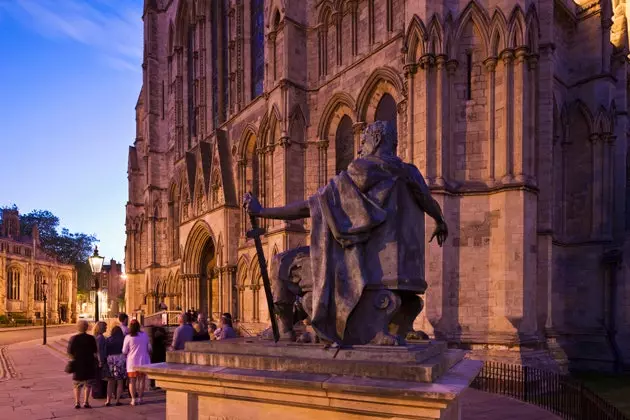
Constantine the Great
Later, already immersed in medieval times, York treasures a great legacy of this time . The jewel in the crown is the gothic cathedral, Minister for the locals , which was completed in 1472. It has the privilege of having the largest stained glass window in England, with an area of 186 meters -almost like a tennis court- of colored mosaics. This work collects and foreshadows the history of the world from the genesis to the apocalypse. For 15 euros, one has the right to walk freely through the cathedral and climb up to the tower to appreciate the views of the county. Without a ticket, access to the venue is very limited.
By the way, inside, perhaps some curious person will be surprised to see the image of an astronaut in a ceiling medallion . No, the architects were not Nostradamus. It turns out that in 1984, a huge fire burned down much of the cathedral's ceiling. For its reconstruction, a children's drawing contest was organized. The two winners chose to draw astronauts. As a reward, his works are part of the interior of the ship.

interior of the cathedral
Another of the great legacies of medieval times is the wall (12th – 14th centuries). One can travel through it until almost completing the perimeter of the city. Only a few small sections of the wall are not preserved. The rest gives to recreate wars looking through the loopholes and taking cover behind the battlements. Also, the four medieval gates that already gave entrance to the city , perfectly preserved, encourage us to wonder about the time. Leaving the train station, one will come face to face with the micklegate gate . It is impossible not to be tempted to cross it.
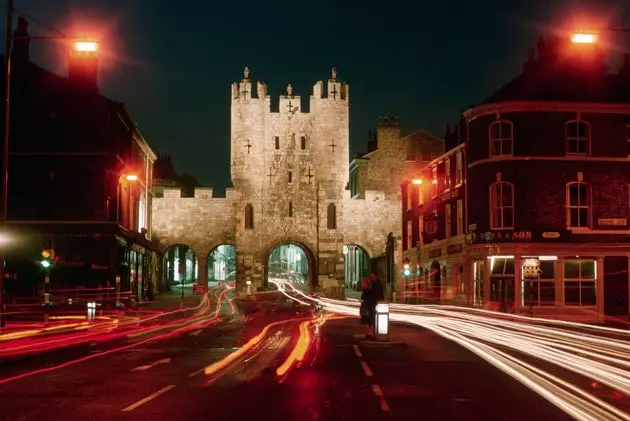
micklegate gate
After the medieval path, we find one of the most characteristic corners of the city, the shambles . It is a narrow cobbled street with two or three-story houses on each side of the sidewalk that, in some sections, stand out until they almost touch. They were designed in this way so that the businesses of the time, mostly butchers, could hang the meat at the entrance of the stores, minimizing contact with the sun and better preserving the piece. There is still a hook at the entrance of the stores which, today, are mostly articles crafties.
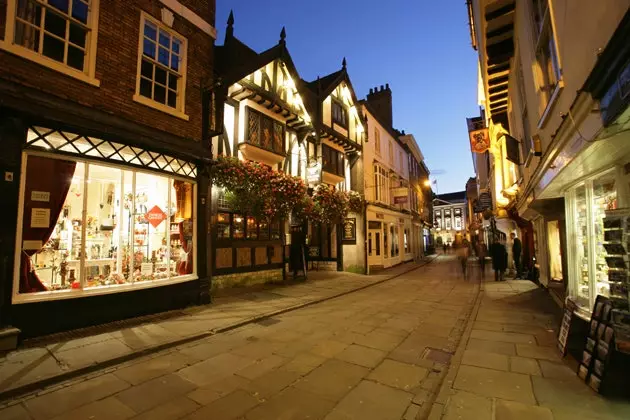
A walk through its 'shambles' is essential
EAT AND DRINK IN THE CITY OF HAM
And it is precisely in a shop of this type that York ham was cured for the first time. Several sources point out that the fired was obtained from burnt wood that was left over from the work of York Cathedral. Local sources defend that York ham has to be made from a pig that is only found in these parts. It seems that it is more palatable, larger and more pink after curing.
That being said, if one feels hungry, one can go as far as king's square and go up to the tea room Harlequin located on the second floor of a traditional house. If one finds one of the tables at the entrance, the plan is already unbeatable. Through the window, one can see, in great detail, the shows in the square with extras that recreate medieval scenes. Today it's time for a specialist to get rid of chains, ropes and a straitjacket. See it to believe it. All enlivened with a cheese board.
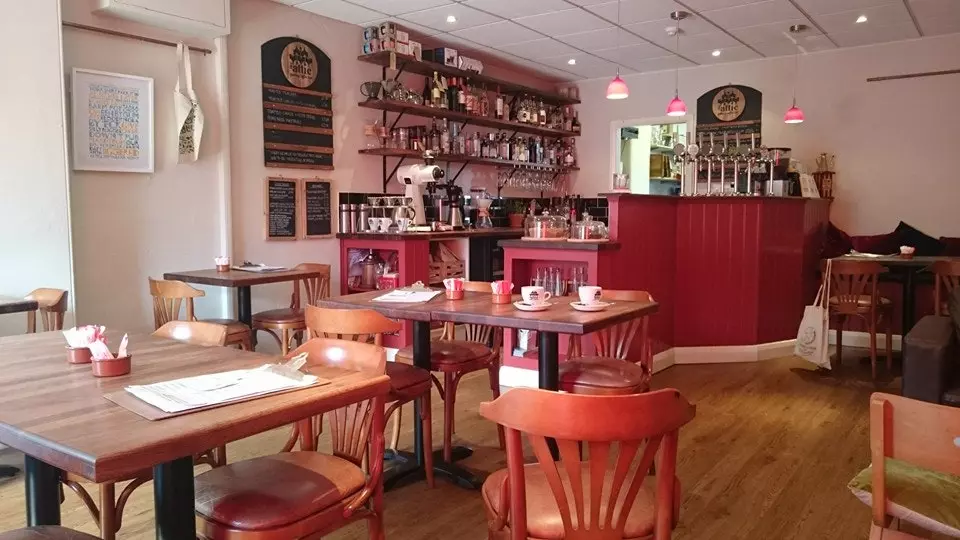
The Attic (at Harlequins)
For something more traditional, one of the busiest places in the city to have a snack is the Betty's . The place is like very traditional and, as a foreigner, well, a afternoon tea of countryside will enter wonderfully. It is worth booking in advance since the queue usually waits even in the street. To bad, in York, there are enough coffee shops where one can own a sausage roll size XXL to survive a few hours. In addition, there are plenty of traditional pubs open with homemade menus. And a good pint, of course.
Despite charging energy, the history of York is still incomplete . It would be a mistake to ignore that the popular Guy Fawke He is a native of this city. Yes, the famous character who puts a face to the mask of v for Vendetta and that he committed suicide after being arrested for wanting to blow up the British Parliament. The same. In fact, the place where he was born is today a hotel pub open for menus and short stays. There are numerous memories of the figure of Guy Fawkes within the premises. However, it seems that the city has not wanted to exploit the figure of him beyond these four walls.
The industrial age also has fixed stops around the city. One of them is chocolate. Without a doubt, York is the chocolate city of England par excellence. The city has more than 300 years of cocoa tradition that is based on three brands: Rowntree, Cravens and Terry. what to say that Here the Kit Kat was born and that, currently, 6 million of these chocolate bars are produced in York every day! It is not surprising that, depending on the wind, a walk through the city is accompanied by the smell of milk chocolate. Of course, the city pays tribute to him with a museum dedicated exclusively to chocolate.
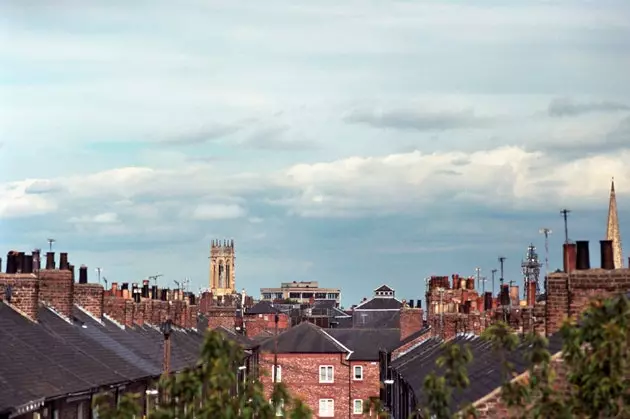
the sky over york
Finally, a great legacy of the industrial revolution is also found in the city train museum . This museum is one of the main attractions of the city and delights children and adults. The space displays hundreds of locomotives, including a beautiful Art Deco-style Duchess of Hamilton (1932) or a Mallard (1938) which broke the speed record for steam engines. In addition, the space also exhibits a large amount of Trenéphile memorabilia. A must for train fans.
Apparently, York has witnessed many historical events and, without a doubt, is a representative sample of what has happened throughout the country. It remains to be seen what will come ahead. Perhaps they are not new barbarian invasions, but the moment to decide if one is on the side of Europe or outside of it. A population in which hair is still styled the McGyver style will also have a say. And if a Vendetta comes out of here, it won't be the first time either.
Follow @nikotchan
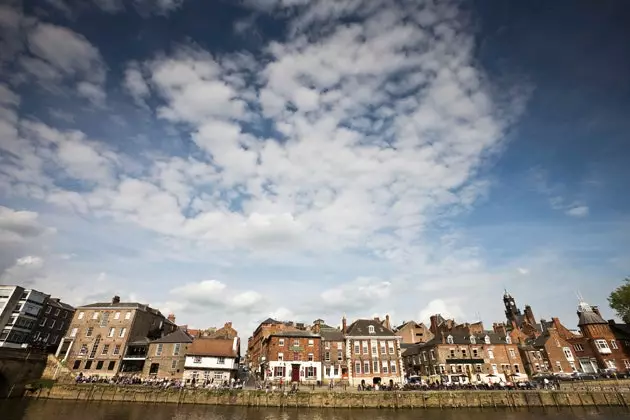
york waterfront
*** You may also be interested in...**
- 48 hours in Belfast
- Trendy neighborhoods in Europe that are worth a visit
- 48 hours in Brighton
- Things you miss now that you don't live in Spain
- All trips 48 hours
- London in 48 hours
- Everything you need to know about London
- 22 things you miss about Spain now that you don't live here
- The 100 things you should know about London - 25 things about London that you will only understand if you have lived there - Gastromorriña in London: survival guide
